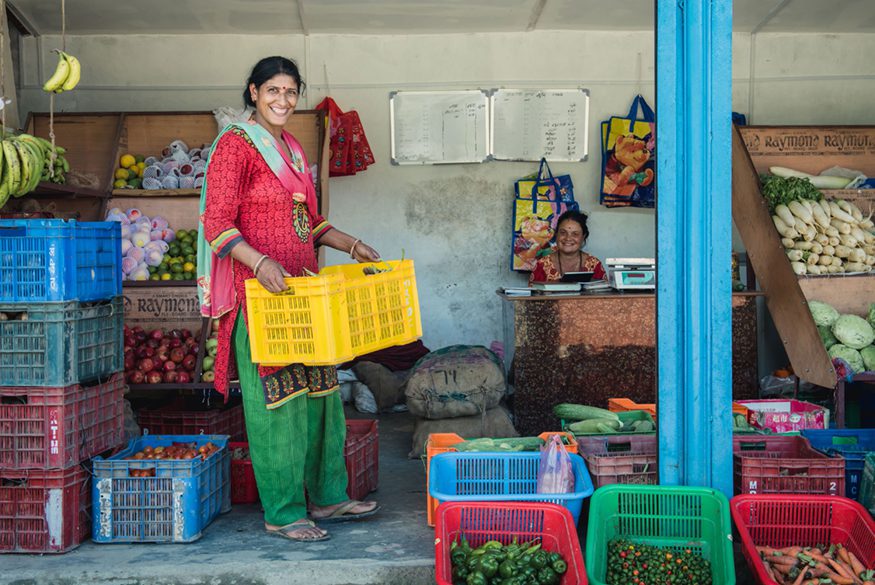By Jordan Teague
In October, the U.S. government released its second Global Food Security Strategy, for 2022 through 2026. This strategy guides the work of Feed the Future, the U.S. government’s flagship global food security and agriculture initiative. In both 2016 and 2018, Bread for the World members helped win passage of the legislation that requires such a food security strategy, the Global Food Security Act (GFSA).
Since GFSA was enacted in 2016, Feed the Future has worked toward three primary objectives: inclusive and sustainable economic growth led by the agriculture sector, strengthened resilience to crises, and improved nutrition especially for women and young children. In the updated strategy, these overall objectives have not changed. However, the world in which Feed the Future operates most certainly has.
Since the original strategy was developed, global hunger has continued to rise for reasons that include conflict, climate change, economic downturns, and most recently, the COVID-19 pandemic. In better news, there is an increasing recognition—long past due—that global, regional, and local inequities are barriers to ending hunger. In addition, there is an emerging consensus that ending hunger requires a global food systems approach, or a more holistic look at the most important improvements needed in getting food “from farm to fork”—from growing to transporting to cooking.
In response, Feed the Future has increased its emphasis on five areas: equity and inclusion, climate change, COVID-19, food systems, and conflict. New commitments include consulting with marginalized groups, reducing greenhouse gas emissions in agricultural projects, financing efforts to revive markets, focusing on producing affordable nutritious foods, and promoting an “enabling policy environment” where ending hunger is a priority.
Working toward equity and inclusion requires recognizing the knowledge and abilities that communities already have and the importance of people leading their own development. In turn, this will lead to investing more in locally-created, locally-led organizations.
USAID Administrator Samantha Power recently made a commitment that by 2025, USAID will invest 25 percent of all its funds directly in organizations and companies in lower-income countries, rather than channel these resources through U.S.-based organizations. Currently, only 6 percent of USAID funding goes to local stakeholders, so this is a great step forward and cause for celebration!
The most recent Global Food Security Strategy commits to increasing the number of local partners over the years 2022 to 2026. Bread for the World supports including Feed the Future’s own partnerships in Ambassador Power’s broader “25 percent local” commitment for USAID. We also look forward to future increases in local capacity.
Recognizing the major obstacles posed by climate change to reducing hunger and malnutrition, the strategy prioritizes investments in building people’s resilience and ability to recover from disasters. To reduce the damage climate change causes the agricultural sector, Feed the Future could invest more in climate early warning systems to enable people to better prepare, and/or develop an affordable crop insurance plan for farmers. Crop insurance would also allow farmers more flexibility to plant a variety of nutritious crops. Another means of strengthening resilience is by enabling families to diversify their sources of income so that, as the saying goes, they don’t have all their eggs in one basket and thus are less likely to lose everything they have to a climate disaster. It is important to make sustainable livelihoods programs available to more people affected by climate change.
Finally, the strategy includes a continued focus on nutrition as both a critical need for individuals and a prerequisite for robust local and national economies. The strategy elevates the role of agriculture in improving nutrition—for example, by making it a priority to ensure that families have year-round access to affordable nutritious foods, and by fortifying foods with micronutrients to help prevent and correct nutritional deficiencies. Bread for the World has consistently supported both year-round nutrition, as part of Bread’s agenda to accelerate progress on global nutrition, and food fortification, as part of the “priority package” of nutrition services shown to be most effective in reducing malnutrition.
Feed the Future plans to take a “big picture” approach in both areas. Efforts will range from enabling farmers to produce more nutritious crops, to strengthening markets and infrastructure so that households can get access to nutritious foods more quickly (important because these foods are often more perishable), to providing technical assistance so that governments and businesses can establish food fortification regulations and processes.
The release of this updated strategy is a significant step forward in Feed the Future’s decade-long campaign to reduce global hunger and malnutrition. It is now important for advocates, such as those of us at Bread for the World, to hold our government to its commitments of prioritizing and investing in nutrition, local partners, and efforts to build resilience in the face of climate change. Together, we can end hunger.
Jordan Teague is the interim director of policy analysis and coalition building with Bread for the World.



